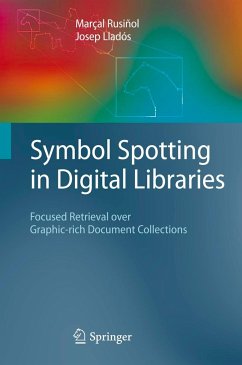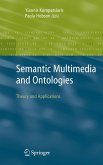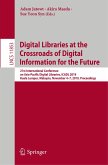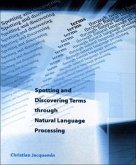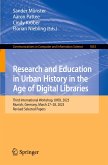The specific problem of symbol recognition in graphical documents requires additional techniques to those developed for character recognition. The most well-known obstacle is the so-called Sayre paradox: Correct recognition requires good segmentation, yet improvement in segmentation is achieved using information provided by the recognition process. This dilemma can be avoided by techniques that identify sets of regions containing useful information. Such symbol-spotting methods allow the detection of symbols in maps or technical drawings without having to fully segment or fully recognize the entire content.
This unique text/reference provides a complete, integrated and large-scale solution to the challenge of designing a robust symbol-spotting method for collections of graphic-rich documents. The book examines a number of features and descriptors, from basic photometric descriptors commonly used in computer vision techniques to those specific to graphical shapes, presenting a methodology which can be used in a wide variety of applications. Additionally, readers are supplied with an insight into the problem of performance evaluation of spotting methods. Some very basic knowledge of pattern recognition, document image analysis and graphics recognition is assumed.
Topics and features:
* Includes a Foreword by Professor Karl Tombre, Director of the INRIA Nancy - Grand Est research center and Editor-in-Chief of Springer's International Journal on Document Analysis and Recognition
* Introduces the problems of symbol spotting and focused retrieval, outlining an architecture for solving these problems
* Examines techniques in computer vision for recognizing objects in scenes, and their application to the specific problem of spotting graphical symbols in documents
* Describes a method to determine probable locations of symbols in technical drawings which makes use of vectorial signatures as symbol descriptors
* Presents a spotting method which uses a prototype-based search as the basis for the focused retrieval task
* Explores an indexing method that retrieves locations of interest where a query symbol is likely to be found
* Investigates techniques for evaluating the performance of symbol-spotting systems, defined in terms of recognition abilities, location accuracy and scalability
Researchers and practitioners in the field of graphics recognition, interested in the problem of symbol spotting and focused retrieval applications in the context of digital libraries, will find this an invaluable text on the subject.
Dr. Marçal Rusiñol is a Research Associate at the Computer Vision Center and at the Computer Sciences Department of the Universitat Autònoma de Barcelona, Spain. Dr. Josep Lladós is Director of the Computer Vision Center and Associate Professor at the Computer Sciences Department of the Universitat Autònoma de Barcelona, Spain.
Pattern recognition basically deals with the recognition of patterns, shapes, objects, things in images. Document image analysis was one of the very ?rst applications of pattern recognition and even of computing. But until the 1980s, research in this ?eld was mainly dealing with text-based documents, including OCR (Optical Character Recognition) and page layout analysis. Only a few people were looking at more speci?c documents such as music sheet, bank cheques or forms. The community of graphics recognition became visible in the late 1980s. Their speci?c interest was to recognize high-level objects represented by line drawings and graphics. The speci?c pattern recognition problems they had to deal with was raster-to-graphics conversion (i.e., recognizing graphical primitives in a cluttered pixel image), text-graphics separation, and symbol recognition. The speci?c problem of symbol recognition in graphical documents has received a lot of attention. The symbols to be recognized can be musical notation, electrical symbols, architectural objects, pictograms in maps, etc. At ?rst glance, the symbol recognition problems seems to be very similar to that of character recognition; - ter all, characters are basically a subset of symbols. Therefore, the large know-how in OCR has been extensively used in graphical symbol recognition: starting with segmenting the document to extract the symbols, extracting features from the s- bols, and then recognizing them through classi?cation or matching, with respect to a training/learning set.
This unique text/reference provides a complete, integrated and large-scale solution to the challenge of designing a robust symbol-spotting method for collections of graphic-rich documents. The book examines a number of features and descriptors, from basic photometric descriptors commonly used in computer vision techniques to those specific to graphical shapes, presenting a methodology which can be used in a wide variety of applications. Additionally, readers are supplied with an insight into the problem of performance evaluation of spotting methods. Some very basic knowledge of pattern recognition, document image analysis and graphics recognition is assumed.
Topics and features:
* Includes a Foreword by Professor Karl Tombre, Director of the INRIA Nancy - Grand Est research center and Editor-in-Chief of Springer's International Journal on Document Analysis and Recognition
* Introduces the problems of symbol spotting and focused retrieval, outlining an architecture for solving these problems
* Examines techniques in computer vision for recognizing objects in scenes, and their application to the specific problem of spotting graphical symbols in documents
* Describes a method to determine probable locations of symbols in technical drawings which makes use of vectorial signatures as symbol descriptors
* Presents a spotting method which uses a prototype-based search as the basis for the focused retrieval task
* Explores an indexing method that retrieves locations of interest where a query symbol is likely to be found
* Investigates techniques for evaluating the performance of symbol-spotting systems, defined in terms of recognition abilities, location accuracy and scalability
Researchers and practitioners in the field of graphics recognition, interested in the problem of symbol spotting and focused retrieval applications in the context of digital libraries, will find this an invaluable text on the subject.
Dr. Marçal Rusiñol is a Research Associate at the Computer Vision Center and at the Computer Sciences Department of the Universitat Autònoma de Barcelona, Spain. Dr. Josep Lladós is Director of the Computer Vision Center and Associate Professor at the Computer Sciences Department of the Universitat Autònoma de Barcelona, Spain.
Pattern recognition basically deals with the recognition of patterns, shapes, objects, things in images. Document image analysis was one of the very ?rst applications of pattern recognition and even of computing. But until the 1980s, research in this ?eld was mainly dealing with text-based documents, including OCR (Optical Character Recognition) and page layout analysis. Only a few people were looking at more speci?c documents such as music sheet, bank cheques or forms. The community of graphics recognition became visible in the late 1980s. Their speci?c interest was to recognize high-level objects represented by line drawings and graphics. The speci?c pattern recognition problems they had to deal with was raster-to-graphics conversion (i.e., recognizing graphical primitives in a cluttered pixel image), text-graphics separation, and symbol recognition. The speci?c problem of symbol recognition in graphical documents has received a lot of attention. The symbols to be recognized can be musical notation, electrical symbols, architectural objects, pictograms in maps, etc. At ?rst glance, the symbol recognition problems seems to be very similar to that of character recognition; - ter all, characters are basically a subset of symbols. Therefore, the large know-how in OCR has been extensively used in graphical symbol recognition: starting with segmenting the document to extract the symbols, extracting features from the s- bols, and then recognizing them through classi?cation or matching, with respect to a training/learning set.
From the reviews:
"This monograph is a clearly written and accessible survey and framework for the field, and it should prove useful to researchers and students in computer vision, pattern recognition, and related fields. It would also be instructive for advanced practitioners in these areas ... . References are provided at the end of each chapter for researchers who need or want to refer to the primary literature. In short, this book is a concise, readable, and informative resource on its specialized problem domain and related areas." (R. M. Malyankar, ACM Computing Reviews, October, 2010)
"This monograph is a clearly written and accessible survey and framework for the field, and it should prove useful to researchers and students in computer vision, pattern recognition, and related fields. It would also be instructive for advanced practitioners in these areas ... . References are provided at the end of each chapter for researchers who need or want to refer to the primary literature. In short, this book is a concise, readable, and informative resource on its specialized problem domain and related areas." (R. M. Malyankar, ACM Computing Reviews, October, 2010)

